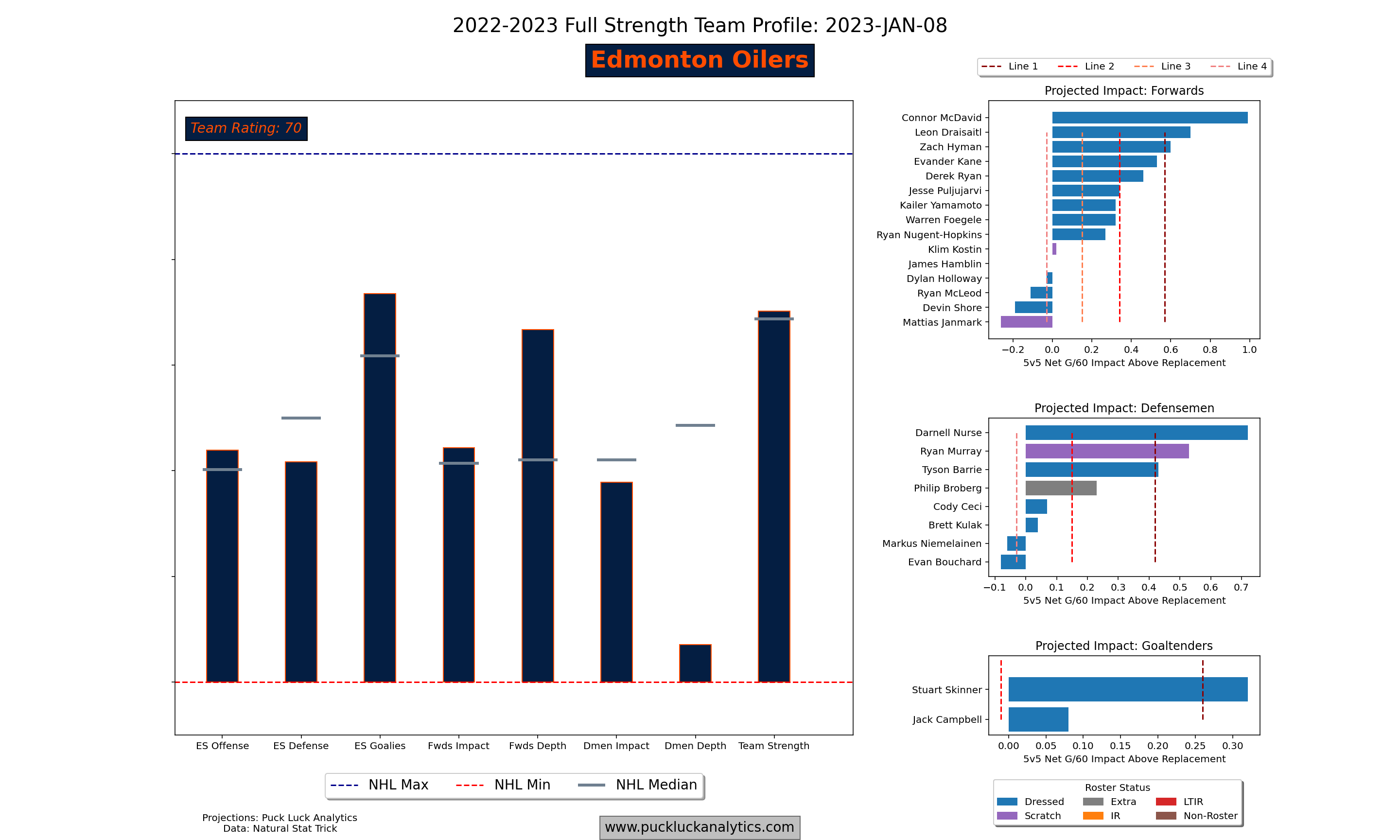Today we continue our way through the power rankings with a look at the middle third of the league, looking at teams #21 to #11. If you missed the bottom third, find #32-#22 here.
Before we jump back in, a reminder that we’re using projected point percentage (Team Strength on the plots) as our metric to rank the teams. We’re ranking future projected team performance, ignoring standings points banked through the first half of the season.
Ok, onto the teams that have embrace mediocrity with their current roster construction.
#21 – Detroit Red Wings
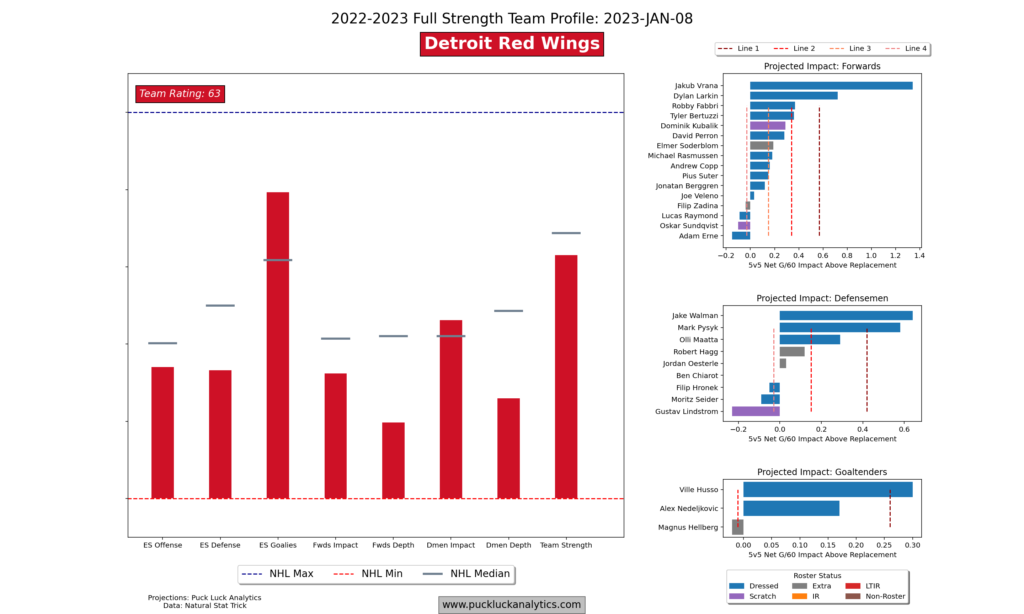
The Detroit Red Wings received some outstanding rookie performances from Lucas Raymond and Moritz Seider last season and GM Steve Yzerman added some veteran depth over the summer. They still have work to do to become contenders but a climb into the middle third of the league is a sign of progress. They managed to hang with the big guns in the Atlantic through the first 20 games this season before tapering off to a level that is probably more representative of their current roster strength. With a number of highly touted defense prospects in the system, their blue line could become a force over the next few seasons.
#20 – Ottawa Senators
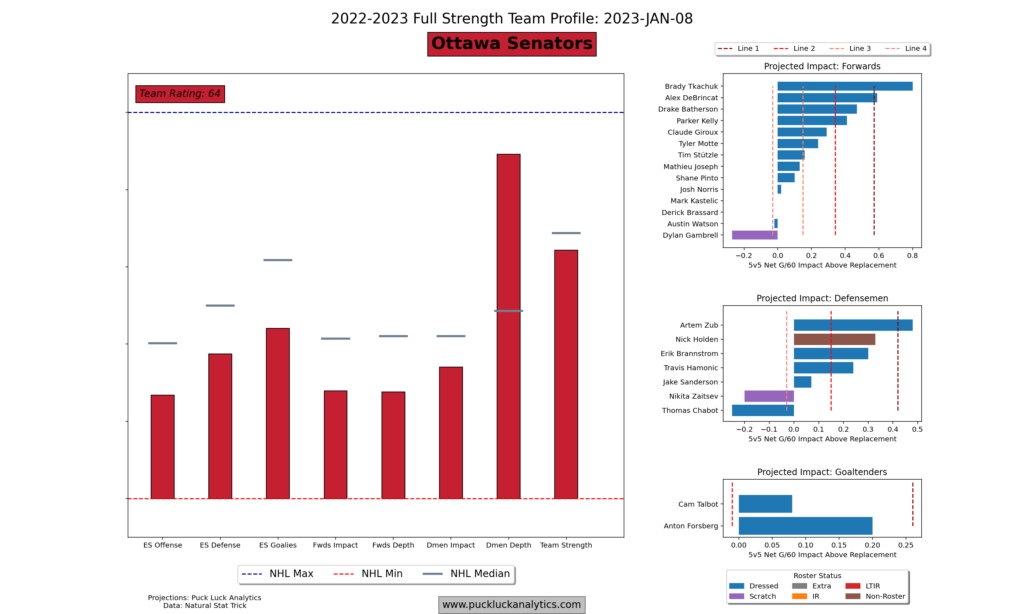
Another Atlantic Division team that made offseason moves indicating they wanted to pull out of their rebuild occupies the #20 spot. The Ottawa Senators made some offseason splashes, adding Alex DeBrincat and Claude Girouux. They still lack the top end talent at both forward and defense needed to push into contender status and the first half of the season has not been kind. The Senators have struggled mightily with finishing this season to the point that we’re likely to see some regression to the mean in the second half.
#19 – Philadelphia Flyers
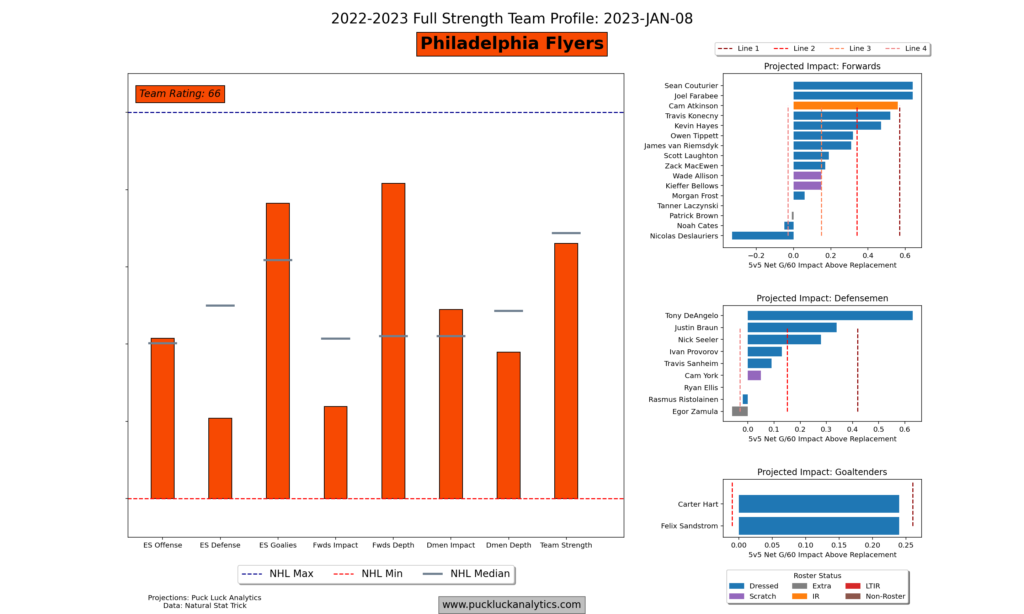
After trading long-time captain Claude Giroux at last year’s trade deadline, the Flyers were positioned well to make a run at Connor Bedard this season. Yet the messaging from management has been that they intend to compete for a playoff spot this season. Their roster really isn’t good enough and the season has not gone well. The Flyers sit well back of the wild card teams at the mid point of the season, despite an incredible start to the season from Carter Hart that masked a lot of other issues.
#18 – Seattle Kraken
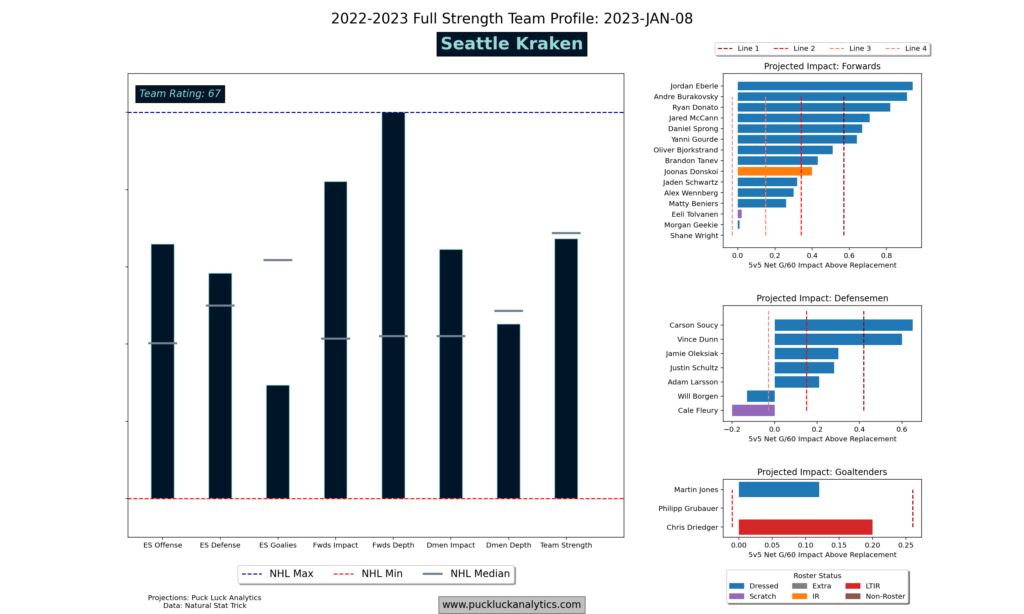
After a disastrous inaugural season, the Seattle Kraken look much better in their second year. They’ve banked enough points to sit in a Pacific Division playoff position and their roster looks close to average. The addition of offseason acquisitions Andre Burakovsky and Oliver Bjorstrand along with an outstanding rookie season from Matty Beniers has given the Kraken one of the best forward groups in the entire NHL. Goaltending remains a concern, though, and could be the Kraken’s Achilles’ heel.
#17 – New York Islanders
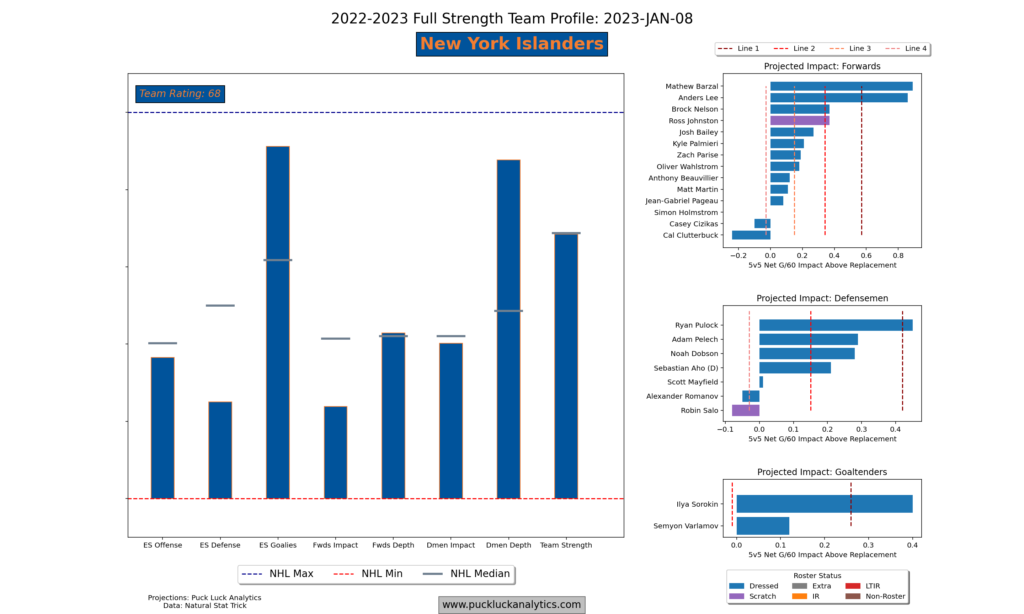
The Islanders are at #17 with a perfectly average team strength rating. That’s largely due to a strong goaltending tandem, while their even strength offense and defense are both below average. Stuck at average is not the ideal spot for an aging team. They’ve been generally out-chanced at 5v5 this season with their goaltending holding them in the playoff race thus far.
#16 – Tampa Bay Lightning
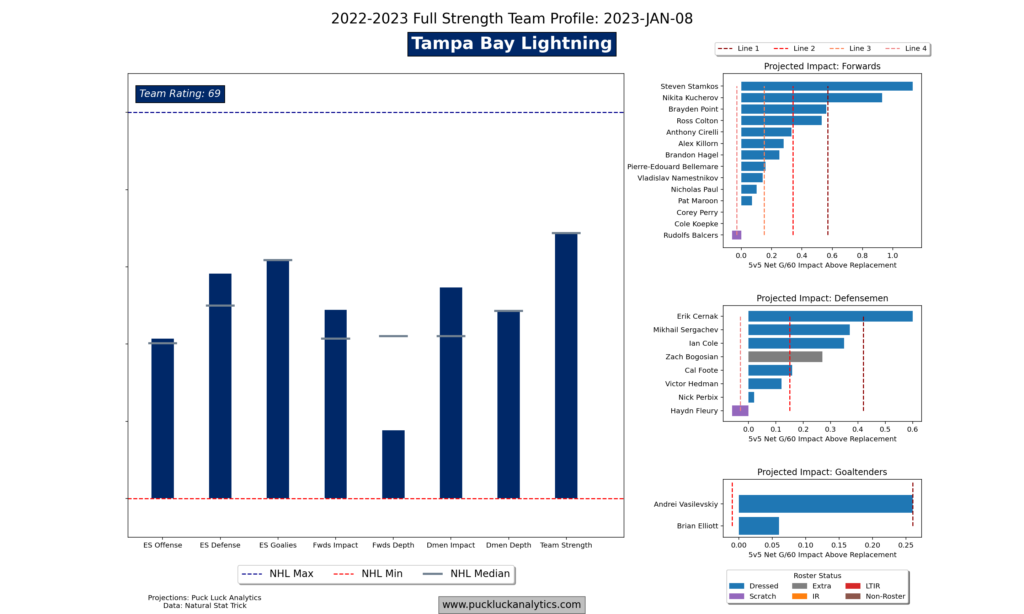
The Tampa Bay Lightning also come in with a very average team strength rating, although their roster profile looks much different than the Islanders. They’re close to average pretty well across the board, although their forward depth could stand to improve. The Lightning’s roster has paid the price of three straight trips to the Stanley Cup Final with plenty of veterans taking hefty raises, including some with new teams due to salary cap constraints. We’ve seen the Lightning look average in the regular season over the past few seasons though, so it seems much too early to write them off.
#15 – Edmonton Oilers
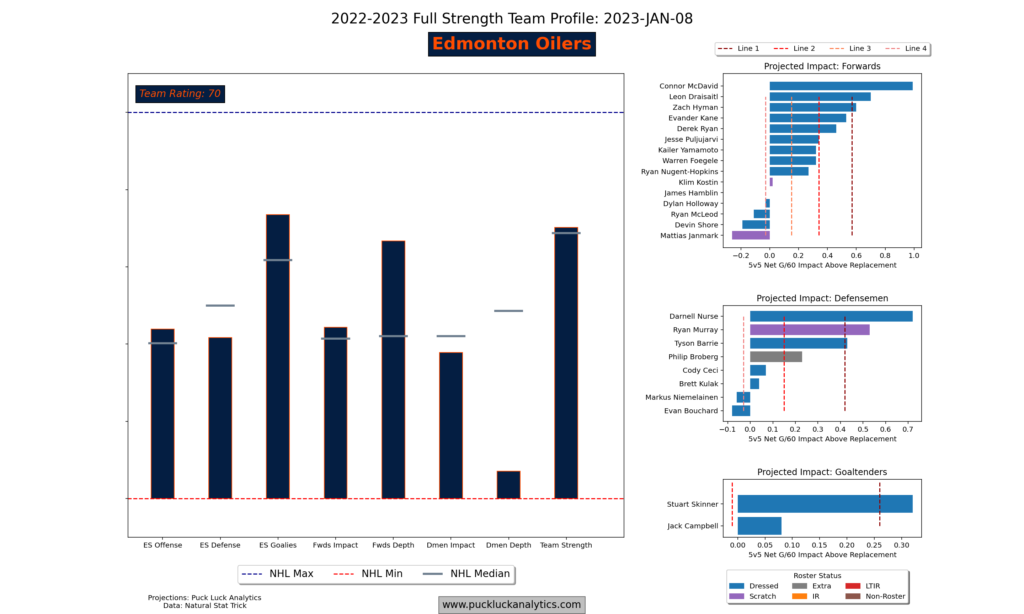
Even with the consensus best player on the planet on their roster, the Edmonton Oilers are still mired in mediocrity. They haven’t been able to surround Connor McDavid with enough talent to build a true contender. Some of that failure is due to an inability to improve the blue line and goaltending. Their big move this offseason was bringing in Jack Campbell to solidify their goaltending, which has gone exactly the opposite of the way they imagined. The defense corps is also thin and we see some skaters trying to fill roles that they just aren’t suited to on a regular basis.
#14 – Vancouver Canucks
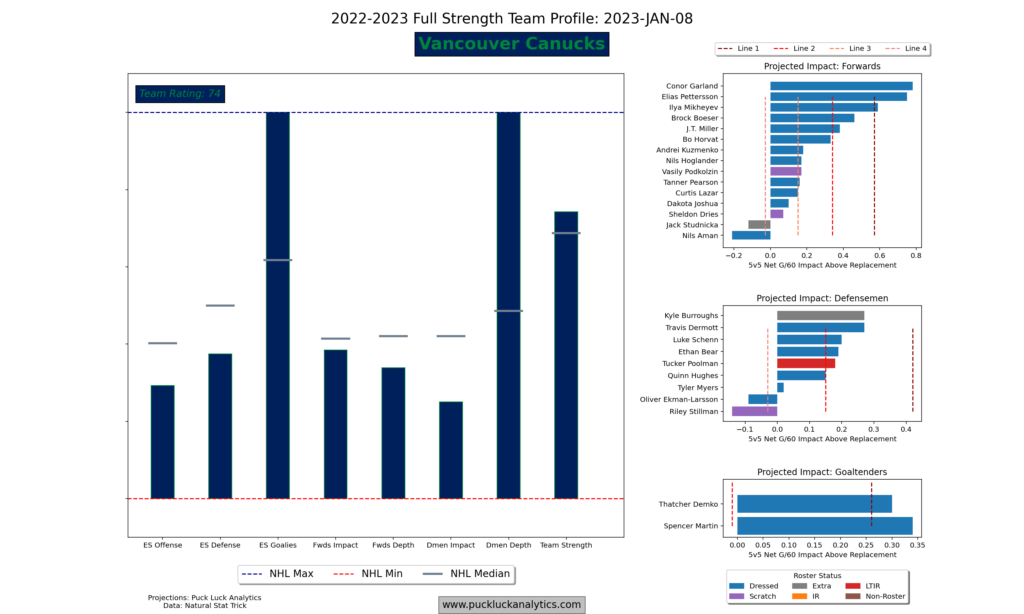
The Vancouver Canucks had an abysmal start to the season that may have cost them a chance at a playoff spot. They look like a much better team than that on paper, however, and their results over the past couple of month has reflected that. They have a strong goaltending tandem that can give them a chance to win on most nights. The defense corps is a big concern though, and limits the Canucks’ potential with it’s current construction. Their depth ranks highly because there is not a large drop off in impact from their top D-men to their average but their top defensemen simply aren’t good enough. Quinn Hughes is dynamic offensively and has significant upside potential but the rest of the group needs a significant upgrade.
#13 – Dallas Stars
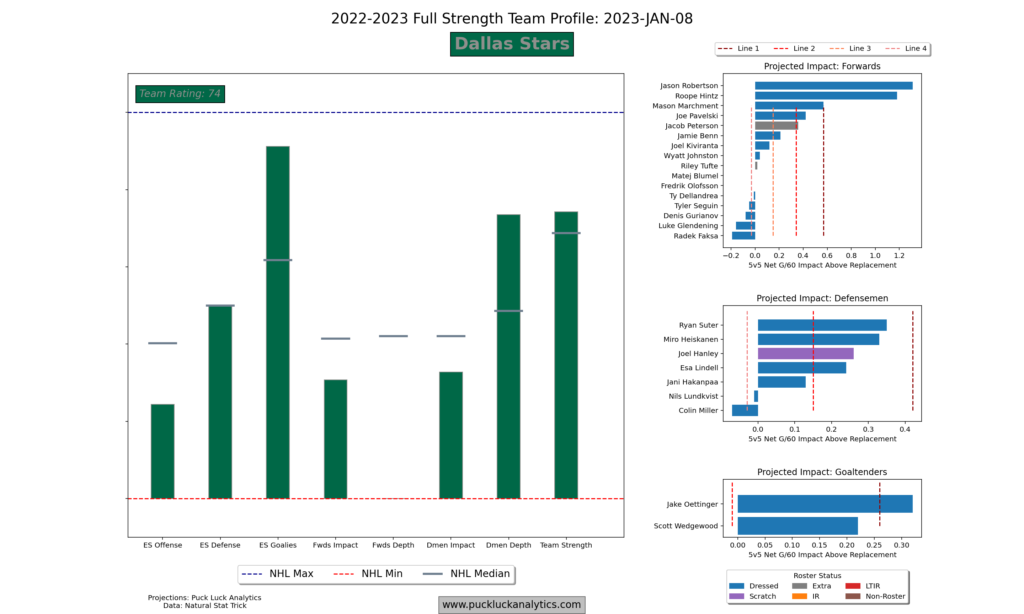
The Dallas Stars are off to a very strong start to the season and find themselves fighting for top spot in the Central Division with the Winnipeg Jets. They may be overachieving to some extent so far this season based on their roster strength, so they’ve got their work cut out to maintain their position through the second half. The Stars success is driven by the top line of Jason Robertson, Roope Hintz and Joe Pavelski along with strong goaltending. With Roope Hintz now injured, it looks like we’ll get a glimpse into how well their depth can fill in.
#12 – Nashville Predators
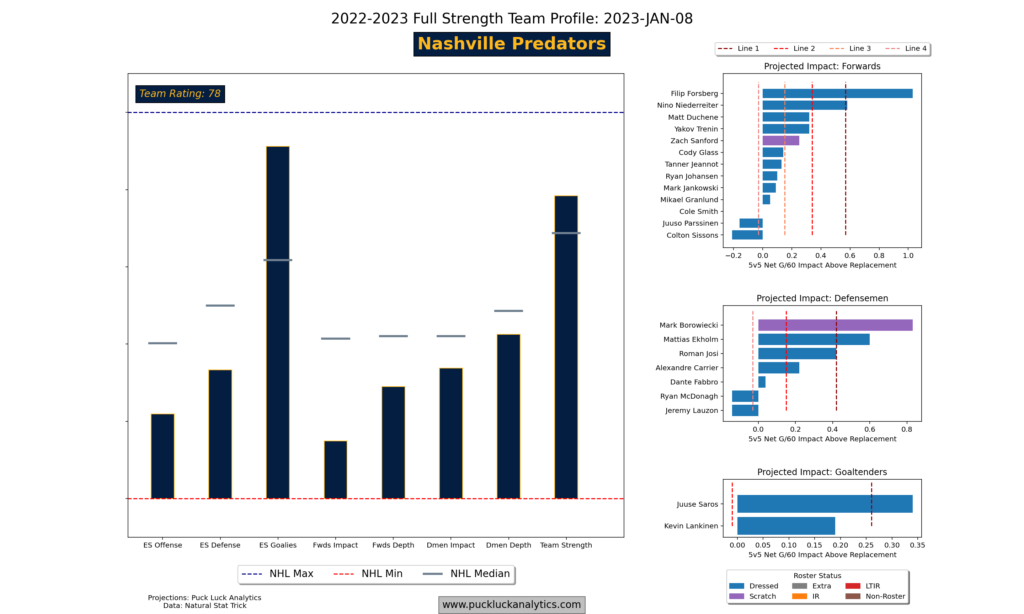
The Nashville Predators got off to a rocky start to the season that set them in chase position, due largely to a slow start from Juuse Saros. Saros has since picked up his game closer to the level we expect from a top tier goaltender and the Predators record has rebounded accordingly. That relationship largely sums up the Preds’ roster profile, with elite goaltending covering up some warts in other areas.
#11 – Minnesota Wild
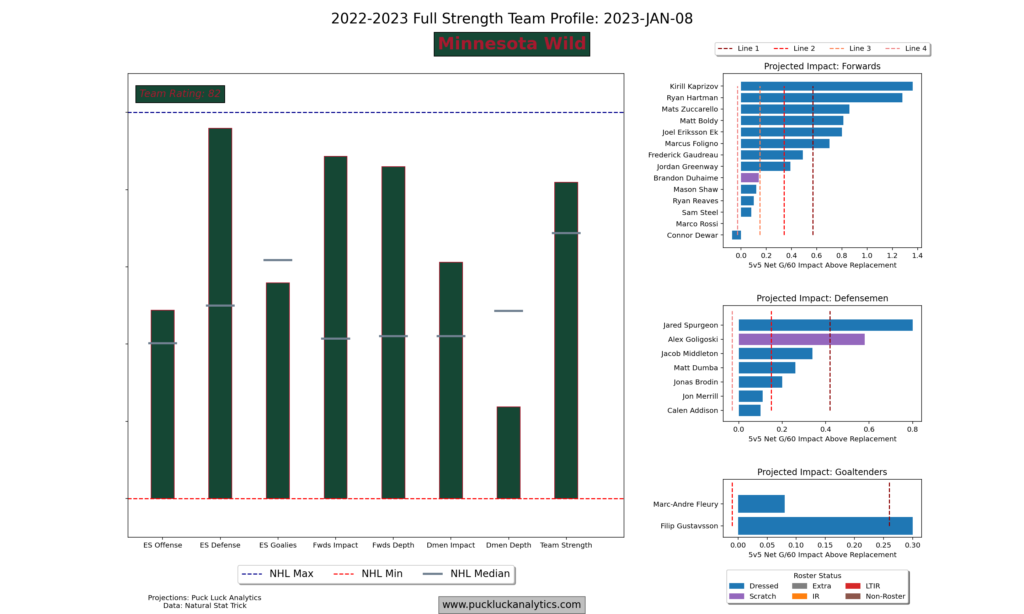
The Minnesota Wild are the final team in the middle third of the rankings. The loss of Kevin Fiala in the offseason meant the loss of some offensive firepower that they weren’t able to replace due to cap constraints, yet their roster profile still shows a fairly decent team. While they aren’t likely to shoot the lights out, their forward group is loaded with capable two-way players and their defense and goaltending are decent.
That’s it for the middle third of the rankings. Tomorrow, we’ll look at the top 10.
